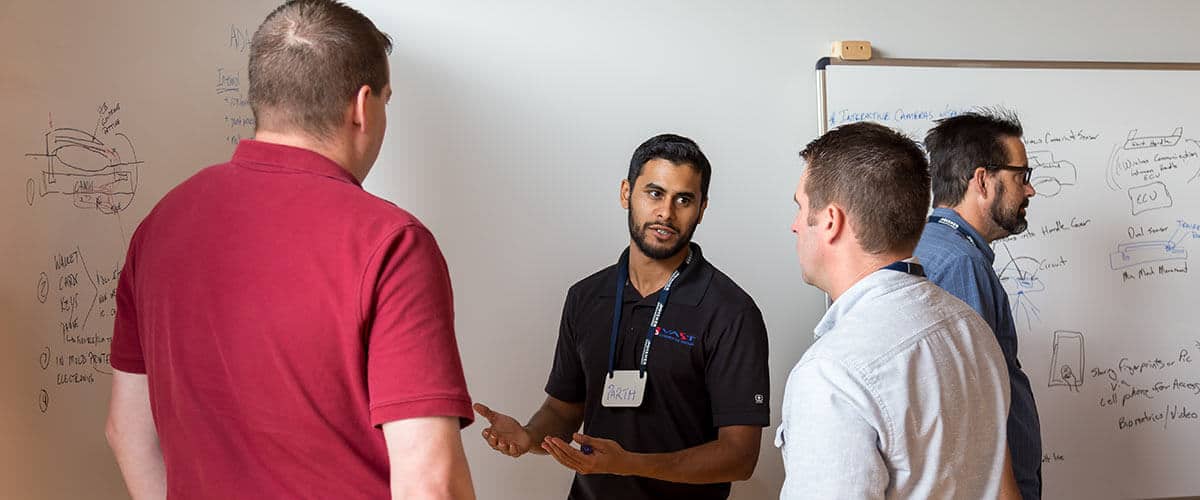Hiring for Year One (Part 1)
November 9, 2017

Written By:
Christy Landrigan | Team Lead - Talent Solutions

Part 1 – Reframing the Talent Gap Conversation
Reports on the deepening talent divide are overwhelming. As I look at the large-scale efforts led by many businesses and institutions in response, I feel some relief that steps are being taken towards long-term, systemic change. Yet there is an increasing need for immediate change. You will soon learn that the answer begins with those of us who make the day-to-day hiring decisions. We need to reframe our definitions of success.
At DISHER, I work with a variety of companies and hiring managers to address their Talent Solution needs. Many of the companies I’ve consulted with have strategic people practices in place (technology, analytics, branding, training programs, etc.) to address the growing talent gaps; however, many do not. Too many of the people I meet who make the day-to-day hiring decisions are following the same, ineffective hiring practices that have been around for decades.
The Pressure to Find Candidates Who Hit-the-Ground-Running
What I hear time and time again is that hiring managers and interviewers want candidates that already possess the ideal skills, education, experience, and attitude on day one. The optimal hiring outcome is to find the person who can “hit-the-ground-running.” The desire for new hires to hit-the-ground-running occurs because it’s often an immediate reaction to Band-Aid the gaps in our ever-evolving, high-demand business environments. Hiring managers feel pressure for relief and they lack the time or resources to train. The quickest, straightest path to sustain their team performance and morale is dependent on the contributions to be gained through the pre-existing skills of their ideal candidate.
Companies continue to set their sights on these hit-the-ground-running candidates, even though research and experience has proven that finding them, especially in STEM professions, is increasingly difficult. They choose, or at least put up with, the immediate trade-offs. It may take longer to locate the right person or they may cost more than budgeted all while their existing staff carries the burden of a heightened workload.
When our ideal outcome is hiring someone who can hit-the-ground-running, I think it’s critical we take a step back and recognize what we are asking. We are essentially looking for candidates currently working in a similar capacity who are willing to leave their established position to make a lateral move. Is this really a long-term solution? Why would a highly-talented person want to make a lateral move into a new position… and stay?
Consider a More Proactive Approach to Hiring
As a rule, hiring managers, interviewers, and recruiters mutually set their sights on getting to the hire. Seems logical. What’s the job description? What skills and experience should the hire have? When is the ideal start date? What’s the culture fit? What’s the interview process? All are good and valid questions.
Yet after many good hires, and yes, bad hires, it’s become increasingly evident that this is an inherently transactional and reactive approach. Hiring managers make the grocery list and send out the recruiters to search for candidates with the most or every item on their list as they shop the aisles of their resume. Recruiters look for all of the things they’ve done and relate them to the things hiring managers want them to do now. Once a hire has been made, the recruiting transactions have been fulfilled. Recruiters hand off the candidate, then go on to the next one, rinse, and repeat.
Companies have all been hiring this way for so long that their behaviors have become conditioned. It’s the norm. Recruiting is positioned as a temporary process, tasked only with finding those candidates who check the boxes that fulfill the business needs of today but not the needs of the future.
This is a short-term, one-sided approach. There is a better way to expand our candidate pool! To improve retention, engagement, and business performance, and make an immediate, first-hand impact in the growing environmental talent divide, we must start with reframing the purpose of the recruiting phase.
Stay tuned for Part 2 in this series which will layout DISHER’s proven strategy for proactive recruiting and performance planning. If you are overwhelmed with the process of hiring top talent or are experiencing rapid growth or high turnover, we would love to help you. Contact DISHER and ask for the Talent Solutions team and let’s put a proactive plan in place.
Written By: Christy Landrigan, Team Lead – Talent Solutions
Christy has nearly a decade of recruiting experience, primarily for technical, professional and leadership positions within manufacturing. She advises and implements process improvements in recruiting teams for local and North American companies. Christy has a Bachelors Degree in Psychology and a Masters in Public Administration.



